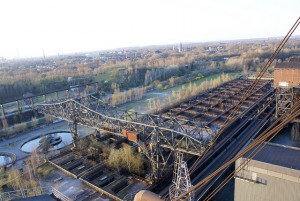 Wastewater treatment plants demand stout mixing drives. Mixing drives power multiple processes within a wastewater treatment plant. The process of turning wastewater into usable water requires a combination of mechanical and chemical steps. Falk RAM mixer drives are perfect for this sort of application, as they are built to withstand tough conditions.
Wastewater treatment plants demand stout mixing drives. Mixing drives power multiple processes within a wastewater treatment plant. The process of turning wastewater into usable water requires a combination of mechanical and chemical steps. Falk RAM mixer drives are perfect for this sort of application, as they are built to withstand tough conditions.
Early steps of wastewater treatment involve filtering out large suspended solids. Sometimes referred to as “mechanical treatment,” this stage of purification uses screens to trap solids. Gravity is also utilized, as it draws suspended sediments to the bottom of holding ponds and tanks. In scum removal stages, grit is removed via sedimentation. Next, a settling tank separates out heavy sludge, which is further treated for use or disposal. Altogether, the primary stage of the treatment process can remove the number of biodegradable organics (BODs) in water by 20-30%.
Biological cleansing, pre-chlorination, and aeration follow as secondary treatment steps. Biological components may be mixed into wastewater; these microbes eat the BODs, and the water is then sent to additional settling tanks to allow more suspended solids to fall to the bottom. If certain problematic components exist in the wastewater, chlorination can help remove them. Another secondary treatment step, aeration, involves thoroughly mixing the water with air; on the chemical level, air molecules interact with water molecules to remove some gases and some organic elements. Iron, carbon dioxide, hydrogen sulfide, and manganese may be extracted from wastewater in this way. High-performance mixer drives are pivotal at this stage to mix such large amounts of water and complete the aeration process.
In tertiary steps of wastewater treatment, advanced methods of treatment remove lingering contaminants, resulting in water that is 99% free of impurities. Nitrogen and phosphorus may be removed; the water may be disinfected; odor control methods may be applied. Reverse osmosis, hydrogen peroxide, and UV light may also be used in wastewater treatment. The end result is near-drinking-quality water. Water that has been treated may be reused as irrigation water or fertilizer. In some water-scarce parts of the world, including Singapore, treated wastewater is reused as tap water.
Falk RAM Mixer drives are ideal for wastewater treatment plants. Their long-term drive bearings last for a minimum of 30,000 service hours. Problematic oil leakage is eliminated by Falk’s drywell design, which physically separates the output shaft and oil sump. Finally, large-diameter output shafts and extremely tough housings distinguish Falk mixer drives. Water treatment plants demand reliable performance in challenging environments; Falk parts are designed to deliver consistent performance across thousands of service hours.
[Photo by alex.ch via CC License 2.0]
Posted under Articles, Uncategorized on Monday, April 27th, 2015
